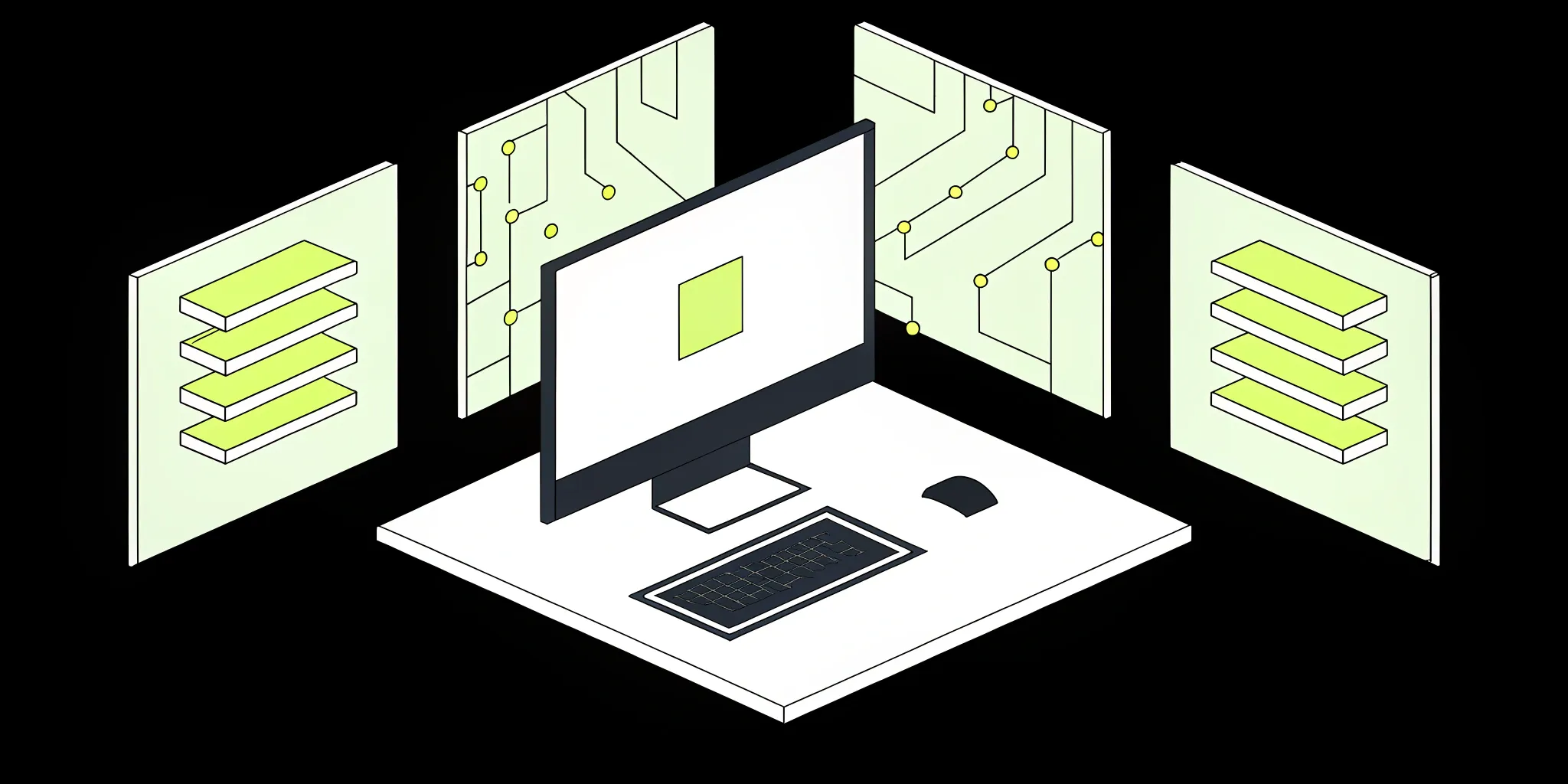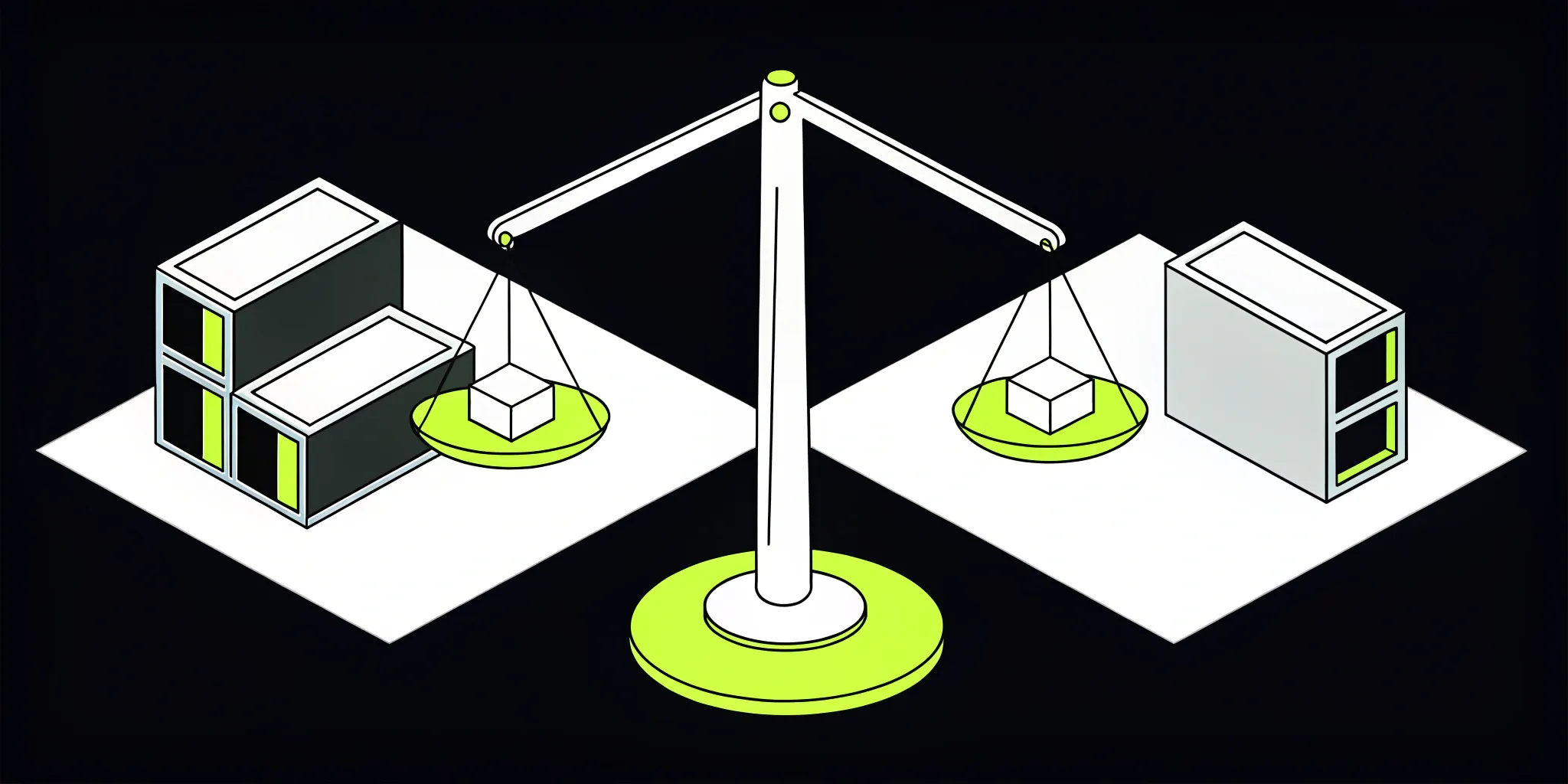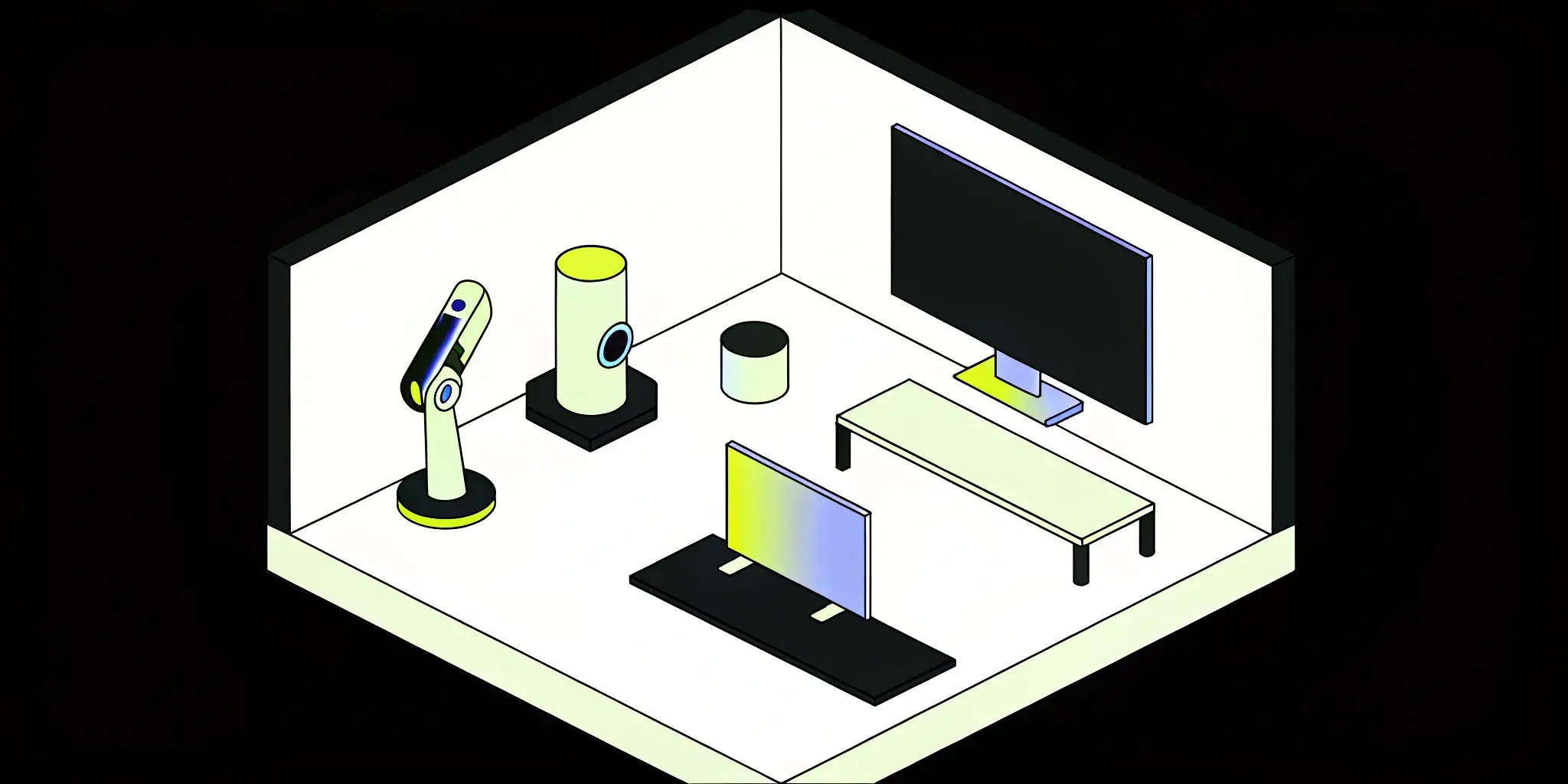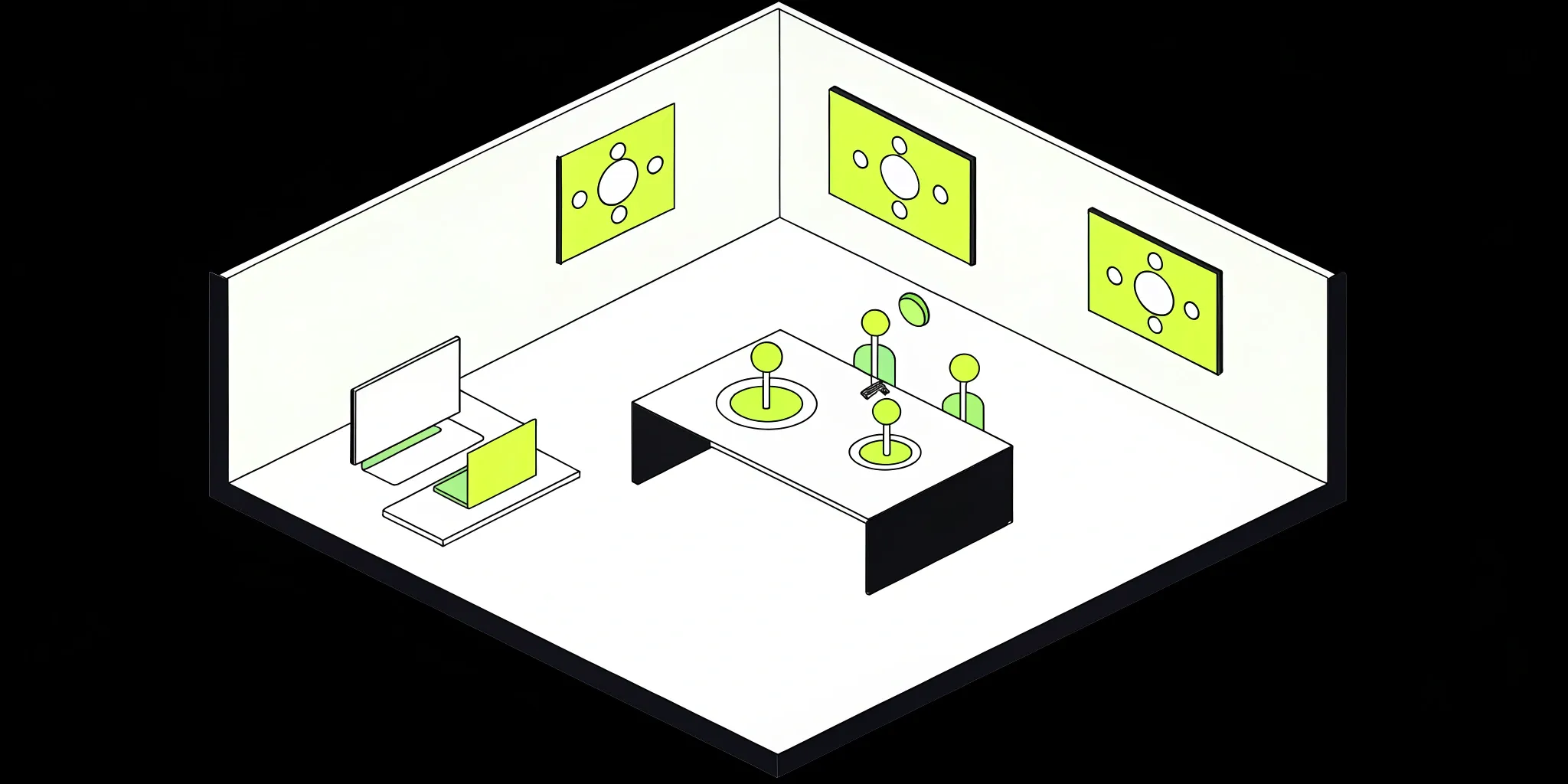What is Agentic RAG? The Future of AI Automation

While people often imagine AI as one all-knowing brain, Agentic RAG operates more like a team of specialists. One agent plans, another queries your database or APIs, and yet another synthesizes results. These agents work together to solve complex, real-world problems, not just retrieve static information.
One agent might be a planner that breaks down your query into smaller steps. Another might be a tool-user that can access your company’s database or a public API. Together, they collaborate to construct an answer, making the entire system more flexible, powerful, and capable of solving real-world problems.
Key Takeaways
- Go beyond simple retrieval with a team of AI agents: Agentic RAG transforms the standard RAG model from a passive information finder into an active problem-solver. It uses specialized AI agents that can plan, use various tools, and consult multiple data sources to build a comprehensive answer.
- Get more accurate answers to complex questions: By breaking down multi-step problems and cross-referencing information from different knowledge bases, Agentic RAG significantly reduces the risk of AI hallucinations. This built-in fact-checking process results in more reliable outputs you can trust for business decisions.
- Successful implementation requires managing complexity: Building an Agentic RAG system involves significant technical challenges, from data integration to managing compute resources. Using a managed platform like Cake handles the underlying infrastructure, letting you deploy a powerful, production-ready AI solution without getting stuck on backend hurdles.
What is Agentic RAG?
Think of a traditional AI system using Retrieval-Augmented Generation (RAG) as a very efficient librarian. You ask a question, and it quickly finds the most relevant book or document in its library to give you an answer. It’s incredibly useful, but its knowledge is limited to the single library it has access to. Agentic RAG, on the other hand, is like giving that librarian a smartphone and a team of expert researchers. Now, when you ask a question, it doesn't just look in one library. It can use its phone to browse the internet, consult a database, use a calculator, or even call another expert—or in this case, another AI agent—to find the best possible answer.
At its core, Agentic RAG enhances the standard RAG model by integrating intelligent AI agents. These agents are specialized programs that can perform actions, make decisions, and use various tools to gather information. Instead of just retrieving a static piece of data, an Agentic RAG system can break down a complex query into smaller steps, decide which tool or data source is best for each step, and then synthesize the findings into a single, comprehensive response. This transforms the AI from a passive information retriever into an active problem-solver, making it far more flexible and capable of handling nuanced, multi-step tasks without constant human guidance.
Think of a traditional AI system using Retrieval-Augmented Generation (RAG) as a very efficient librarian. You ask a question, and it quickly finds the most relevant book or document in its library to give you an answer. It’s incredibly useful, but its knowledge is limited to the single library it has access to. Agentic RAG, on the other hand, is like giving that librarian a smartphone and a team of expert researchers.
From Traditional RAG to Agentic RAG
Traditional RAG systems tend to follow a fixed, linear path: retrieve, then generate. This rigidity becomes a limitation when a query requires multiple steps, reasoning, or information from several different places. If the initial search doesn't provide a complete picture, the system can struggle to adapt, sometimes leading to answers that are incomplete or miss the mark. It’s like the librarian can only look on one shelf, even if the full answer requires books from several different sections of the library.
This is where Agentic RAG changes the game. It enhances the traditional framework by introducing autonomous AI agents—specialized programs that can think, plan, and perform actions. One agent might be an expert at searching the web, another at querying a database, and a third at summarizing complex documents. These agents can work together to break down a problem, decide on the best strategy, and gather information from multiple sources to construct a comprehensive answer.
This evolution represents a fundamental shift from a passive information retriever to a proactive problem-solver. Agentic RAG doesn't just find answers; it orchestrates a process to build them. By using multiple agents that can dynamically determine the best approach for each unique query, the system becomes far more flexible and capable. It can tackle multi-step tasks and complex questions with a level of accuracy and depth that traditional RAG simply can't match, opening up new possibilities for sophisticated AI automation.
The core components of agentic RAG
To understand how Agentic RAG works, it helps to break it down into its essential parts. While traditional RAG has two main components—a retriever and a generator—Agentic RAG introduces a more dynamic, multi-layered structure. Think of it as upgrading from a simple two-person team to a full-fledged task force. Each component has a distinct role, but they all work together to tackle complex problems that a simpler system couldn't handle.
At its heart, an Agentic RAG system is made up of four key elements:
- the initial user prompt that sets the process in motion
- the Large Language Model (LLM) that provide the reasoning power
- the AI agents that perform the tasks
- the diverse knowledge sources they draw from
Getting these components to work in harmony is the key to building a powerful and accurate AI solution. Managing this entire stack, from the infrastructure to the AI models, is what allows companies to build and deploy these advanced systems efficiently. We'll explore each component a little further below.
While traditional RAG has two main components—a retriever and a generator—Agentic RAG introduces a more dynamic, multi-layered structure.
Prompts and user queries
Everything in an Agentic RAG system begins with a prompt. This is the question or command you give the AI. But unlike a simple search query, a prompt in an Agentic RAG context kicks off a much more sophisticated process. Instead of one AI searching a single database, Agentic RAG acts like a team of expert assistants that collaborates to find the best possible answer. This approach is designed to overcome the limitations of traditional RAG, where relying on a single source can sometimes lead to incomplete or inaccurate results. The initial query sets the stage for the agents to plan, research, and synthesize information to deliver a truly comprehensive response.
Large Language Models
LLMs are the engines that power the entire Agentic RAG framework. They provide the core intelligence, enabling the system to understand language, reason through problems, and generate human-like text. In an Agentic RAG system, LLMs aren't just used to generate the final answer; they are the foundation for the AI agents themselves. Each agent is essentially a specialized instance of an LLM, fine-tuned to perform a specific function. This is what allows for the creation of different types of AI agents, from ones that route queries to others that execute complex, multi-step plans. The quality and capabilities of the underlying LLMs directly impact how effective the entire system will be.
What AI agents do
Some agents are planners, breaking down a complex question like "What were our top-selling products last quarter, and how did our marketing campaign impact their sales?" into smaller, manageable tasks. Other agents are routers, deciding which knowledge base or tool is best for each sub-task. These agents can access different tools, search various databases, and even ask for clarification. By working together, they can tackle problems that require multiple steps and sources of information, allowing them to learn and improve over time as they handle more queries.
- READ: What is Agentic AI?
Knowledge bases and information sources
A major advantage of Agentic RAG is its ability to pull information from virtually anywhere. It’s not limited to a single, static document library. The AI agents can connect to a wide array of external knowledge sources to gather the most relevant and up-to-date information. This could include your company’s internal SQL databases, a CRM like Salesforce, public APIs, or even the live internet. This flexibility ensures that the answers aren't just well-reasoned but are also grounded in current, accurate data from the most appropriate source. For businesses, this means you can build an AI system that understands the full context of your operations by tapping into the same data your teams use every day.
How agentic RAG works
Think of Agentic RAG not as a single action, but as a dynamic conversation between different AI components. While traditional RAG follows a straightforward path—retrieve, then generate—Agentic RAG introduces a more intelligent, multi-step workflow. It’s less like a vending machine spitting out a pre-packaged answer and more like a skilled research assistant who knows how to dig for the right information, check their sources, and piece together a comprehensive response. This process allows the system to tackle much more complex questions with greater accuracy and context. Let's break down what that looks like in practice.
When you ask a question, the system doesn't just jump to a conclusion. Instead, it first activates a team of specialized agents to analyze the query to truly understand what you're asking.
A step-by-step look at the process
When you ask a question, the system doesn't just jump to a conclusion. Instead, it first activates a team of specialized agents to analyze the query to truly understand what you're asking. Then, they strategize the best way to find the answer, deciding which knowledge sources to consult first. It’s a thoughtful, methodical approach that ensures the final answer is built on a solid foundation of relevant, verified data, not just a lucky guess from the language model.
Retrieving and evaluating information
AI agents act like a detective on a mission. Once it receives a query, it determines the best place to start its search—this could be an internal database, a public API, or the web. Unlike traditional RAG, which searches just once, an agent in this system can perform a multi-step process. It retrieves a piece of information and then critically evaluates it. Is this enough to answer the question? Is it accurate? If the answer is no, the agent can refine its search, try a different source, or even break the question down into smaller parts to investigate separately. This iterative loop of searching and evaluating continues until the agent is confident it has the best possible information.
How agents work together
The real magic happens in the collaboration between agents. An Agentic RAG system uses different types of AI agents, each with a distinct role. For example, a routing agent might act as the team leader, deciding whether a query should go to a web search agent or a database agent. A query planning agent can take a complex question like, "What were our top-selling products last quarter, and how did our marketing campaign impact their sales?" and break it into smaller, manageable tasks for other agents to handle. This teamwork allows the system to execute complex plans, adapt to new information on the fly, and deliver nuanced answers that a single-step process could never achieve.
Why use agentic RAG?
The shift to an agentic framework is a significant leap in capability. It provides a more dynamic and reliable way to get answers from your data, directly addressing some of the core limitations of earlier models. For businesses, this means moving from simple Q&A to sophisticated problem-solving.
Greater flexibility and adaptability
Agentic RAG is far better than traditional RAG at adjusting to changing situations and tackling queries that require information beyond a simple database lookup. Instead of being confined to one source, the AI agents can pull from internal documents, public APIs, or other databases, giving you a much more comprehensive and adaptable system.
Better accuracy, fewer AI hallucinations
One of the biggest hurdles with AI is the risk of 'hallucinations'—when the model confidently states something that's completely wrong. For any business, this is a major liability. Agentic RAG tackles this problem head-on. By using multiple agents to retrieve and cross-reference information, the system creates a built-in fact-checking process. If one source provides faulty information, another agent can flag the discrepancy. This approach significantly reduces the likelihood of generating incorrect answers, leading to far more accurate outputs you can trust for business decisions.
Solving complex, multi-step problems
Agentic RAG is great at taking broad, multi-part question and break it down into smaller, manageable tasks. For example, it can compare regional sales performance against marketing spend by assigning different agents to pull data from separate systems. The system then synthesizes these different pieces of information to deliver a cohesive, insightful answer that a simpler system couldn't manage on its own.
What to consider with agentic RAG
Agentic RAG is an exciting step forward, but it’s not a plug-and-play solution. Before you jump in, it’s smart to understand the practical side of things. Thinking through the potential challenges ahead of time will help you build a stronger, more effective system from day one.
The challenges of implementation
Getting an Agentic RAG system up and running involves more than just turning on a switch. One of the biggest hurdles is the technical complexity of integrating it with the business systems you already use, especially if you’re working with older, legacy platforms. The quality of your data is another critical piece of the puzzle. Your agents need access to well-organized, high-quality information to retrieve accurate answers. If your data is messy or unstructured, you’ll need to invest time in cleaning it up first. Planning for these integration and data preparation steps is essential for a smooth rollout.
Understanding resource and cost needs
While Agentic RAG is powerful, it’s also more resource-intensive than its traditional counterpart. At its core, the system runs on computing power, and using more AI agents to handle complex queries costs more money and can sometimes slow down response times. It’s a trade-off between capability and cost. These agents aren't perfect and can make mistakes, so you're also investing in a system that requires ongoing monitoring. When planning your budget, think beyond the initial setup and account for the operational costs of compute resources and the potential for scaling your team of agents as your needs grow.
Managing errors and response times
Since Agentic RAG systems often involve multiple agents working together, there’s always a chance that one might fail or that they won’t coordinate perfectly. This can lead to errors or slower-than-expected answers. However, here’s the upside: unlike traditional RAG, an agentic system is designed to learn from its mistakes. It can improve its results over time through iteration. Think of it as a system that gets smarter with every query it handles. This ability to self-correct is a game-changer, turning potential errors into opportunities for the model to refine its process and deliver more accurate, reliable information in the long run.
Agentic RAG in action
What makes Agentic RAG so powerful for business is the dynamic decision-making at its core. The system isn't just following a rigid script; it's actively deciding which "expert" to consult based on the question it receives. In this way, the AI agent acts like a detective, piecing together clues from different sources to solve the case. This moves your AI capabilities beyond simple Q&A and into the realm of handling complex, multi-step workflows. It’s how AI becomes more autonomous and capable of tackling the messy, real-world challenges your business faces every day in customer support, research, and operations.
Customer support and troubleshooting
Imagine a customer asks, "My new smart thermostat isn't connecting to my Wi-Fi, and I've already tried resetting it. My order number is 12345." A traditional chatbot might fail here, but an Agentic RAG system gets to work. One agent understands the core problem (Wi-Fi connectivity) and extracts the order number. A second agent uses that number to query your CRM, confirming the exact product model. A third agent then searches your technical knowledge base for advanced troubleshooting steps specific to that model, intelligently skipping the basic "reset" advice the customer already tried. Finally, a synthesizer agent compiles this into a clear, personalized, and genuinely helpful response.
Financial analysis and reporting
Let's say you need a report on a competitor's performance last quarter, including current market sentiment. An Agentic RAG system can delegate this task beautifully. The first agent pulls the official quarterly report from a financial database like EDGAR. At the same time, another agent scans financial news sites and market analysis blogs for commentary on the earnings release. A third could even access an internal database of your own team's past notes on this competitor. The system then compiles a unified brief, presenting the hard numbers from the report alongside a qualitative analysis of market sentiment. This is a perfect example of how these systems are being optimized for specific domains like finance.
Healthcare and medical research
In a high-stakes field like healthcare, Agentic RAG can help clinicians make more informed decisions, faster. A doctor could ask for the latest treatment protocols for a rare condition, taking into account a patient's specific allergies and medical history. The initial agent parses the query. One agent then searches specialized medical journals and clinical trial databases. Simultaneously, another agent cross-references potential treatments against a drug interaction database to check for conflicts with the patient's current medications. The final output isn't just a list of articles; it's a synthesized summary of viable options, ranked by evidence, with potential risks clearly flagged for the doctor's review.
What's next for agentic RAG?
Agentic RAG is evolving quickly, and the next wave of advancements is set to make these systems even more capable and integrated into our workflows. The focus is shifting from simply providing accurate answers to delivering highly personalized, context-aware interactions while navigating complex ethical landscapes. For any business looking to stay ahead, understanding these trends is key. A managed platform like the one we offer at Cake can help you prepare for and implement these next-generation capabilities efficiently and responsibly.
Personalization and multimodal trends
The future of Agentic RAG is about more than just text. We're seeing a major push toward systems that can understand and process a variety of information types. Soon, you’ll be able to ask an AI agent a question and have it pull answers not just from documents, but also from images, audio clips, and videos. This multimodal capability allows for a much richer and more complete understanding of complex topics.
Alongside this, we're seeing a move toward vertical specialization. Instead of one-size-fits-all models, Agentic RAG systems are being fine-tuned for specific industries like medicine, law, and finance. This means the information retrieved is not only accurate but also highly relevant to the specific jargon, regulations, and knowledge base of a particular field, making it a far more powerful tool for professionals.
Ethics and data handling
As Agentic RAG systems become more autonomous and powerful, the conversation around ethics is taking center stage. With agents accessing and processing vast amounts of information, ensuring data privacy and security is more critical than ever. Businesses must prioritize the responsible use of AI to build and maintain customer trust. This involves creating clear governance policies for how data is sourced, used, and protected throughout the RAG process.
Furthermore, advanced techniques like adaptive retrieval—where systems pull data in real time based on evolving context—introduce new challenges. We have to ask important questions about data sourcing, potential biases in the information retrieved, and the transparency of the agent's decision-making process. Building a successful Agentic RAG system isn't just about technical performance; it's about creating a framework that is fair, transparent, and trustworthy by design.
Understanding Agentic RAG is one thing, but building and deploying a system is a whole other challenge. It requires deep expertise not just in AI models, but also in data infrastructure, cloud computing, and continuous integration. This is where many AI initiatives stall—stuck between a brilliant idea and the complex reality of implementation.
How Cake accelerates your AI initiatives
Understanding Agentic RAG is one thing, but building and deploying a system is a whole other challenge. It requires deep expertise not just in AI models, but also in data infrastructure, cloud computing, and continuous integration. This is where many AI initiatives stall—stuck between a brilliant idea and the complex reality of implementation.
That’s precisely the gap Cake was built to fill. Instead of you having to assemble a team of specialists to build from scratch, we provide a production-ready platform that manages the entire stack. Think of it as the solid foundation and framework for your AI-powered house, letting you focus on what to put inside it.
Managing the entire stack for you
The power of Agentic RAG comes from its moving parts: the LLM, the agents, and the dynamic knowledge bases. Getting them to work together seamlessly requires a robust technical backbone. Cake’s platform handles this heavy lifting by managing the compute infrastructure, integrating the necessary open-source tools, and ensuring all components communicate efficiently. We take care of the complex plumbing so your system can reliably pull in dynamic data and ground its responses in verified information. This frees up your team to focus on the strategic goals of your AI application rather than getting bogged down in backend maintenance and configuration.
Production-ready, specialized solutions
Every industry has its own language, data formats, and critical information sources. A generic AI agent won't cut it for specialized fields like legal research or financial analysis. We accelerate your path to success with pre-built components and solutions optimized for specific domains. This approach, known as vertical specialization, ensures your Agentic RAG system starts with a high degree of relevance and accuracy. By using models and retrieval strategies tailored to your industry, you get more precise, context-aware answers that drive real-time decision-making. It’s the difference between a generalist and a seasoned expert.
Future-proofing your AI
The world of AI is constantly changing, with new capabilities emerging all the time. A key trend on the horizon is the move toward multimodal AI, where agents can understand and process not just text, but also images, audio, and other data types. Partnering with Cake means your AI initiatives are built on an adaptable foundation. We stay on top of these advancements, integrating new, proven technologies into our platform. This ensures your system can evolve without requiring a complete rebuild. Your Agentic RAG solution remains effective and relevant, ready to incorporate the next wave of AI innovation as it becomes production-ready.
Related articles
- Cake: Frontier AI, Fast
- Agentic RAG, Powered by Cake
- A Closer Look at Enterprise RAG
- Customer Service Agents, Made Fast Using Cake
- So, What Is Agentic AI, Exactly?
Frequently Asked Questions
So, is Agentic RAG just a fancier, more complicated version of the RAG I already know?
Not exactly. While it is more complex, it’s better to think of it as a fundamental upgrade in capability. Traditional RAG is great at following a direct, one-step instruction: find a document and generate an answer from it. Agentic RAG transforms that linear process into a dynamic one. It doesn't just follow an order; it creates a strategy, breaks a problem down, and uses multiple tools to solve it. It’s the difference between having a tool that can find a specific page in a book and one that can research a topic across an entire library.
You mentioned AI 'hallucinations.' How does Agentic RAG actually make answers more trustworthy?
This is one of its most important benefits. The risk of incorrect answers, or 'hallucinations,' drops significantly because the system isn't relying on a single source or a single retrieval attempt. Instead, it uses different agents that can pull information from multiple, varied sources—like an internal database and a public API. This creates a built-in fact-checking process. If one source is incomplete or inaccurate, another agent's findings can provide the necessary context or correction, grounding the final answer in verified data.
This sounds powerful, but also complex. Do I need to hire a whole new team of AI specialists to build something like this?
Building an Agentic RAG system from the ground up is definitely a heavy lift that requires deep expertise in infrastructure, data science, and model integration. However, you don't necessarily have to do it all yourself. This is where managed platforms come in. A service like Cake handles the complex backend—the compute infrastructure, the open-source integrations, and all the plumbing—so your team can focus on defining the business problem and using the tool, rather than spending months trying to build it.
What's the real difference between using an Agentic RAG system and just asking a powerful chatbot a question?
The key difference is context and purpose. A general-purpose chatbot pulls answers from its massive, public training data. An Agentic RAG system is designed to be an expert specifically in your world. It connects directly to your company’s private knowledge sources—your CRM, your product databases, your internal documents—to answer questions and solve problems with information that is relevant and specific to your business operations. It’s the distinction between a public librarian and an in-house research analyst who knows your business inside and out.
If the agents can make mistakes, how does the system get better over time?
This is where the design really shines. Unlike a rigid system that just fails, an agentic framework is built to learn from its missteps. When a particular strategy or data source leads to a poor result, the system can recognize that the outcome wasn't ideal. This creates a feedback loop. The system can then adjust its approach for the next similar query, essentially learning which tools and methods are most effective for certain types of problems. Errors become opportunities for the system to refine its process and improve its accuracy.
About Author

Cake Team
More articles from Cake Team
Related Post

Best Open-Source Tools for Agentic RAG

Cake Team

Agentic RAG: Build vs. Buy Guide

Cake Team

How to Build an Agentic RAG Application

Abraham Sharp

5 Powerful Agentic RAG Use Cases Transforming Industries

Cake Team